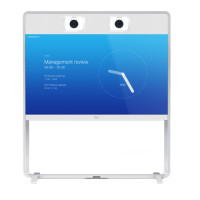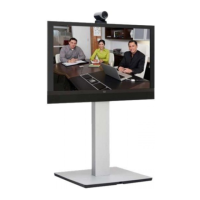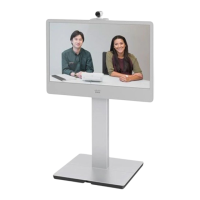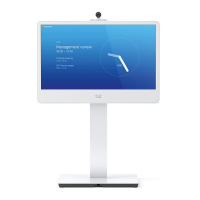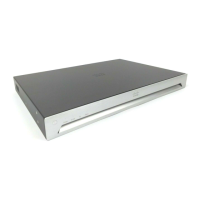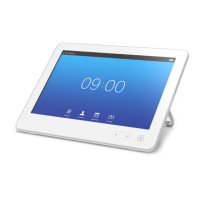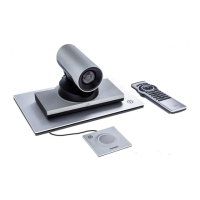D15335.02 Cisco TelePresence MX700 and MX800 API Reference Guide CE8.0, FEBRUARY 2016.
Copyright © 2016 Cisco Systems, Inc. All rights reserved. 24
Cisco TelePresence MX700 and MX800
API Reference Guide
Example 1: Outgoing Call Indication
Outgoing Call Indication is an event reported when an
outgoing call is about to be dialled. Returns the CallId the
call has been assigned.
*e OutgoingCallIndication CallId: x
** end
Example 2: Call Disconnect
Call Disconnect is an event reported when a call is discon-
nected. Returns the CallId of the disconnected call and
reason for the call’s disconnection.
*e CallDisconnect CallId: x CauseValue: 0
CauseString: “” CauseType: LocalDisconnect
OrigCallDirection: “outgoing”
** end
Example 3: Call Successful
Call Succesful is an event reported when a call is
connected successfully, that is when all channels are up
and established.
*e CallSuccessful CallId: 132 Protocol: “h223”
Direction: “outgoing” CallRate: 768 RemoteURI:
“h223:integratorHQ@company.com” EncryptionIn:
“Off” EncryptionOut: “Off”
** end
Example 4: FECC Action request
FECC Action request is an event reported when far end is
sending FECC commands.
*e FeccActionInd Id: 132 Req: 1 Pan: 1 PanRight:
1 Tilt: 0 TiltUp: 0 Zoom: 0 ZoomIn: 0 Focus: 0
FocusIn: 0 Timeout: 300 VideoSrc: 0 m: 0
** end
Example 5: TString message received
TString message received is an event reported when far
end has sent a TString message.
*e TString CallId: 132 Message: “ee”
** end
Example 6: SString message received
SString message received is an event reported when far
end has sent a SString message.
*e SString String: “ee” Id: 132
** end
Events
Event returns information about the events that are available
for feedback. This overview presents examples of some the
events that are available on the API.
To get an overview of the supported events type ?, ?? or help
after xEvent:
• xEvent ? Lists the top level events
• xEvent ?? List all of the available events
• xEvent help Lists the top level events
The result for events depends on the state of the codec.

